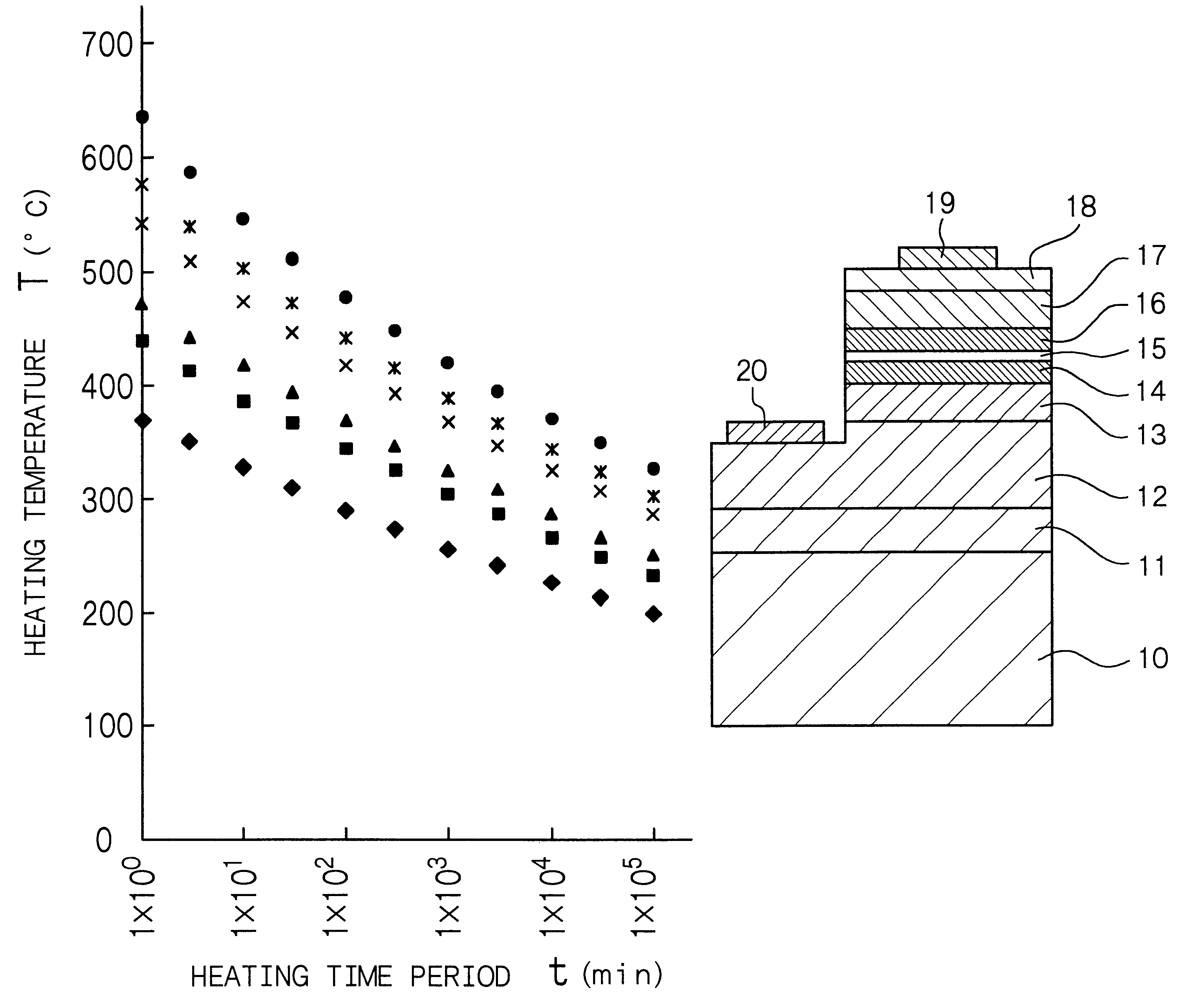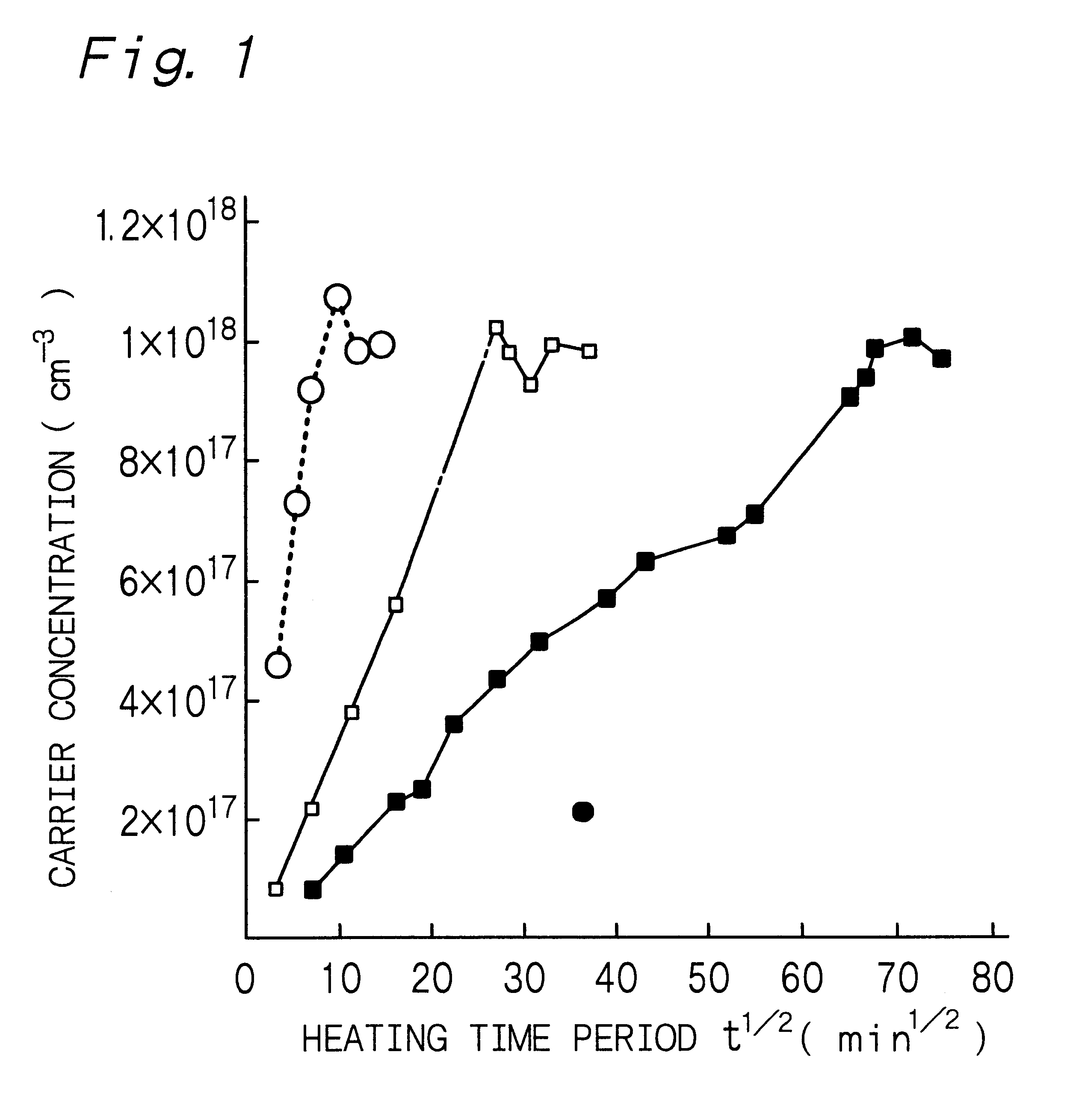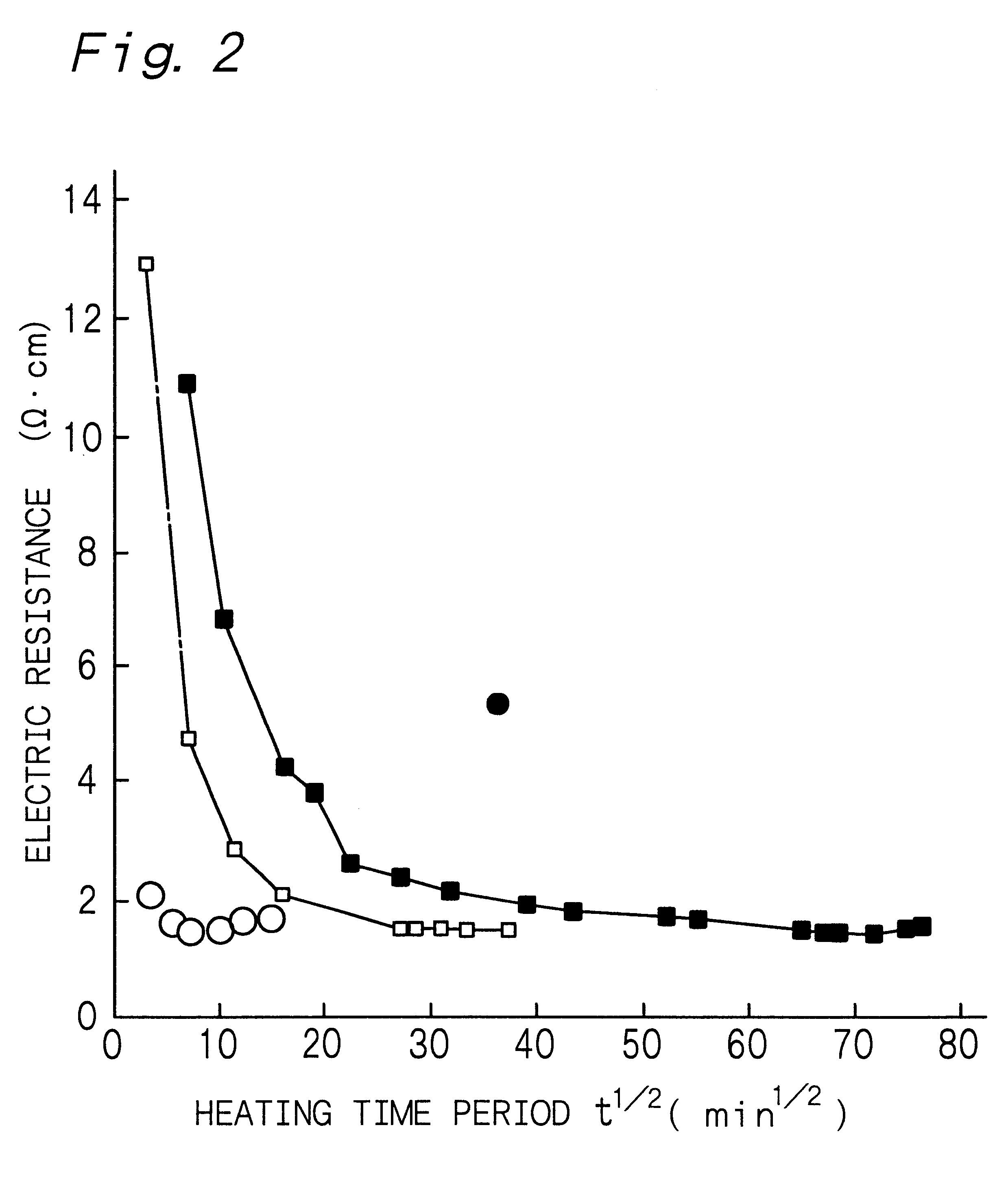Method of heat-treating nitride compound semiconductor layer and method of producing semiconductor device
a technology of nitride compound and semiconductor layer, which is applied in the direction of semiconductors, coatings, semiconductor lasers, etc., can solve the problems of difficult uniform reduction of the resistance of the gallium nitride compound semiconductor layer in the wafer plane, and the long treatment time of the above treatment, so as to achieve the effect of reducing the resistance of the nitride compound semiconductor layer doped with a p-type impurity
- Summary
- Abstract
- Description
- Claims
- Application Information
AI Technical Summary
Benefits of technology
Problems solved by technology
Method used
Image
Examples
example 1
is concerned with the methods of heat-treating a nitride compound semiconductor layer according to the first, second and third aspects of the present invention. Example 1 employed an aerial atmosphere (pressure: atmospheric pressure) as a heating atmosphere.
In Example 1, first, a 40 nm thick buffer layer was formed on a sapphire substrate, then, a 1 .mu.m thick non-doped GaN layer that contained no impurity was formed thereon, and further, a 1 .mu.m thick nitride compound semiconductor layer made of GaN containing Mg as a p-type impurity was formed on the GaN layer. These layers were formed by an MOCVD method. The thus-obtained sample was cut into pieces having dimensions of 5 mm.times.5 mm, and 0.3 .mu.m thick electrodes made of palladium (Pd) were formed on four corners by a vapor deposition method, to prepare test samples for heat-treatment evaluation.
The above test samples for heat-treatment evaluation were placed on hot plates made of stainless steel at T.degree. C. (specifical...
example 2
Example 2 is concerned with the method of producing a semiconductor device that is a semiconductor laser (LD). The method of the above production according to a pressurized MOCVD method that is a kind of a vapor deposition method will be outlined below. In a pressurized MOCVD method, desirably, the MOCVD apparatus for forming various compound semiconductor layers has an internal pressure of 1.1 to 2.0 atmospheric pressures, preferably 1.2 to 1.8 atmospheric pressures. When such a pressurized MOCVD method is employed, there can be reliably prevented a phenomenon that nitrogen is dissociated during the growth of a compound semiconductor layer to cause deficiency of nitrogen in the compound semiconductor layer. In the following explanation, the pressure in the MOCVD apparatus was set at 1.2 atmospheric pressures when various compound semiconductor layers were formed. The pressure in the MOCVD apparatus may be atmospheric pressure. Further, the temperature for forming various compound s...
PUM
| Property | Measurement | Unit |
|---|---|---|
| temperature | aaaaa | aaaaa |
| temperature | aaaaa | aaaaa |
| temperature | aaaaa | aaaaa |
Abstract
Description
Claims
Application Information
 Login to View More
Login to View More - R&D
- Intellectual Property
- Life Sciences
- Materials
- Tech Scout
- Unparalleled Data Quality
- Higher Quality Content
- 60% Fewer Hallucinations
Browse by: Latest US Patents, China's latest patents, Technical Efficacy Thesaurus, Application Domain, Technology Topic, Popular Technical Reports.
© 2025 PatSnap. All rights reserved.Legal|Privacy policy|Modern Slavery Act Transparency Statement|Sitemap|About US| Contact US: help@patsnap.com



